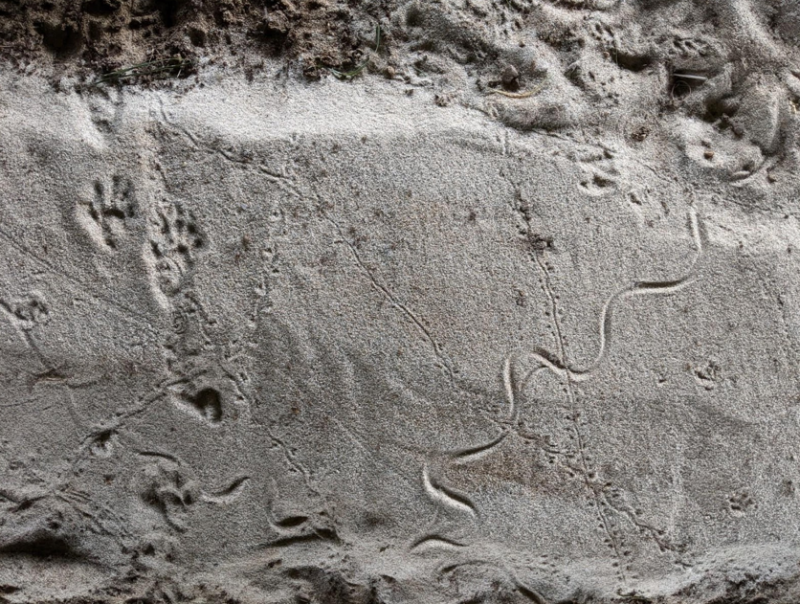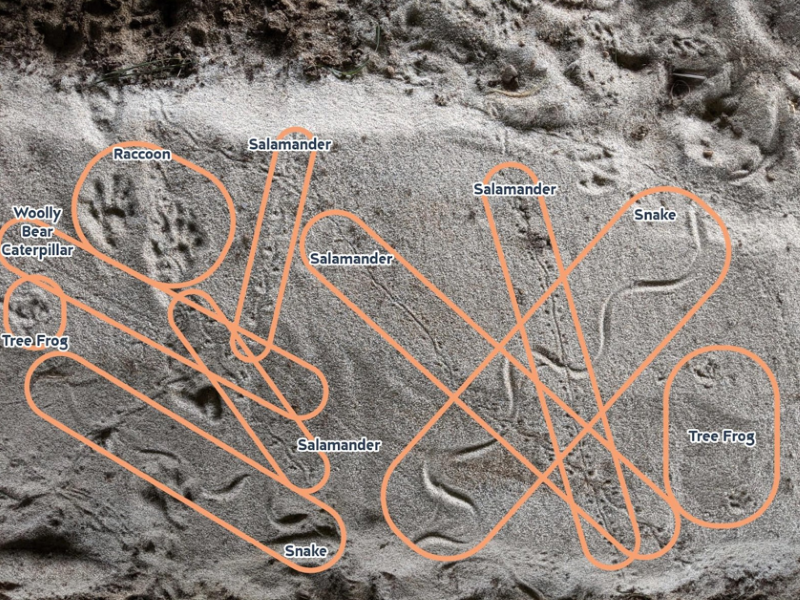Boeckman Bridge Project
The Boeckman Road Extension project began in 2004, aiming to support urban development while maintaining wildlife habitat connectivity between the Willamette River and the Rock Creek Unit of the Tualatin River National Wildlife Refuge. Shortly after construction ended, wildlife monitoring began in 2009 under the Boeckman Bridge using motion detect cameras and sand track beds to document the presence and activity level of mammals, reptiles, amphibians, and birds. Remote cameras were utilized early in the project (2009-2011), but sand track monitoring has continued (2009-2023). Sand track monitoring, conducted each summer, has allowed for detailed monitoring of even the smallest wildlife species. After the collection of over 13,000 records of wildlife activity, this method has revealed frequent use of the area by 24 species of wildlife, most numerous among them being the northern red-legged frog, Columbian black-tailed deer, raccoon, deer mice, pacific chorus frog, opossum, garter snake, Townsend vole, coyote, and salamanders.
The data that has been gathered as a result of this project provides valuable insights into the diverse species crossing under the Boeckman Bridge and is one of the longest running monitoring studies of a wildlife crossing structure, second only to the crossing structures on TransCanada Highway 1 in Banff National Park. This effort is ongoing, however summer 2024 track data was not collected due to active restoration work in the area. We look forward to documenting the restoration response in 2025 and beyond.


Tracks captured in the sand beds under Boeckman Bridge, data shown includes two tree frog tracks, a raccoon, four salamanders, two snakes, and a wooly bear caterpillar.





